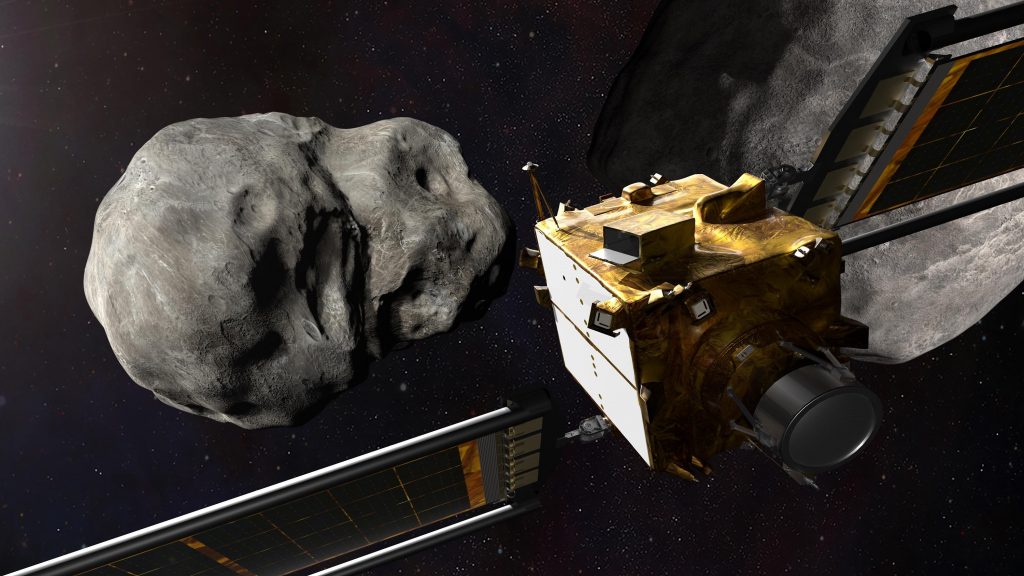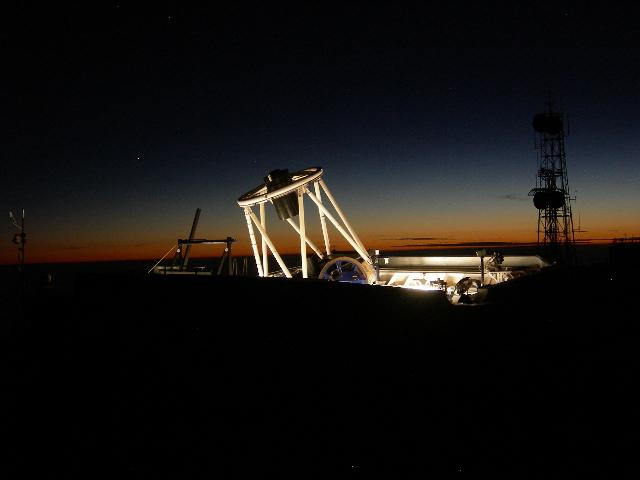UH: Telescope atop Haleakalā to help track impact of intentional spacecraft, asteroid collision

The Faulkes North telescope atop Haleakalā on Maui, is among the observatories that University of Hawaiʻi astronomers will use to track the impact of a planned crash between a spacecraft and an asteroid.
The collision, planned by NASA, is designed to assess if a deliberate impact can deflect objects on a collision course with Earth
“The University of Hawaiʻi Institute for Astronomy (IfA) is playing an important role in the space agency’s first full-scale planetary defense test, dubbed Double Asteroid Redirection Test, scheduled for Monday, Sept. 26 at 1:14 p.m. Hawaiʻi time,” according to a UH press release.
The spacecraft will collide head on with Dimorphos, a small asteroid that poses no threat to Earth.
Following the impact, UH astronomers will use Maui’s Faulkes North telescope and the UH88 telescope on Maunakea to collect data and determine how Dimorphos was impacted.

“The Earth has been hit by big asteroids in the past, and with all likelihood will be hit by something big again,” said J.D. Armstrong, HI STAR director and IfA Maui outreach astronomer in the release. “When we find one coming our way, we want to know what to do. We want to know how to change the path of the asteroid so that it will not hit us. It could be that important.”
Armstrong and fellow IfA Astronomer Dave Tholen will also work with students throughout the next couple of months to track Dimorphos’ orbit using photometric observations.
“If the impact changes the asteroid’s velocity it will prove the planetary defense method can be effective in pushing a potentially hazardous asteroid away from Earth,” according to UH.
Tholen will mentor UH Mānoa undergraduate student Vernon Roark, an astrophysics major who will obtain orbital shift observations as part of his senior research project. HI-STAR high school students Wilson Chau, Holden Suzuki and James Ancheta will work alongside Armstrong on Maui to also closely track the asteroid’s orbit.
According to UH, the Pan-STARRS1 telescope on Haleakalā is the world leader in finding larger Near-Earth Objects that could pose a threat to the planet.
“IfA astronomers who operate the observatory on Maui play a fundamental role in the nation’s planetary defense program. In 2017, during routine operations, Pan-STARRS discovered the mysterious interstellar object, ʻOumuamua, the very first of its kind spotted in the solar system,” UH reports.
“After Pan-STARRS identifies an object that might be passing very close,” UH reports that “telescopes on Maunakea and elsewhere around the world will stop what they are working on and track the object to determine if it is a possible threat to Earth.”
The search for NEOs is funded by NASA’s Planetary Defense Coordination Office through its Near-Earth Object Observations Program.










